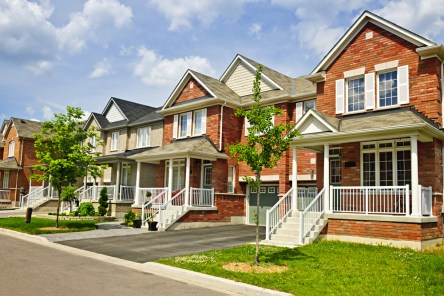National multifamily rents are no longer skyrocketing at breathtaking rates. The news could cause renters to send thank you letters to the powers that be, if they knew who or what those powers were. Primarily, renters can thank a boost in multifamily development which is helping to balance supply and demand. Secondly, they can thank the competition posed by the single-family housing market. A growing demand for townhomes has increased the properties’ market share in sales. According to REALTOR.org, existing single-family home sales are up by 5.2 percent and distressed property inventory has decreased by 23 percent compared to this time last year. The recent stats demonstrate that homeownership is now more accessible for many, particularly when it comes to existing properties. New construction is also becoming more accessible. Total single-family attached construction was up 17 percent on a year-over-year basis by the fourth quarter of 2014, census data reports. Townhouses may soon constitute 11 percent of all single-family developments, inching slowly towards the most recent high of 14.6 percent of market shares last seen in early 2008. The total market share of townhouses is expected to continue its gradual rise in years to come. When looking at market trends, the growth of townhouse sales makes sense. Townhouses offer an ideal compromise between features that both Millennials and Boomers crave in rentals and single-family properties: -Townhomes fit well into urban environments, where so many Millennials and Boomers have set their sights. Single-family attached properties work well in metropolitan infill lots that are on the smallish side for apartment complexes yet are too profitable for one single-family home. -Townhouses come with less yard space than a traditional house, minimizing the amount of time and money that owners must dedicate to maintenance. -Pet owners appreciate that yard space...
Risk Management
Minimizing property damage
Business operations are subject to numerous internal and external risks, including severe weather, which could result in damaged goods and significant financial distress. How managers and property owners prepare ahead of time can entirely alter the course of an event. While hurricanes, fire and other natural calamities cannot be prevented, we can be proactive and minimize potential damage. History teaches us that preparedness is key in many instances; staying informed, knowing your vulnerability and having a plan at hand can make all the difference should disaster strike. Get your property development right by reading these words of wisdom, courtesy of American Restoration, a specialty contractor and reliable partner in the building remediation industry: Review your Emergency Action Plan, making sure it is accurate and up to date. Perform regular maintenance; this is the most practical and economic form of preservation. Review your insurance policies to determine if you have adequate flood and wind coverage. Inspect roofs and flashing to ensure they are properly secure including antennae, signs etc. Trim trees and shrubbery with safety in mind, not just curb appeal; during major storms, it is not uncommon for buildings to suffer a great deal of damage due to trees falling on low-rise structures or breaking windows. Inspect your property and surrounding areas for loose debris (i.e. construction, repair in progress) to ensure supplies, tools and trash are properly secured. Add pre-authorized damage mitigation program to your Emergency Action Plan. “We all empathize with the people of Oklahoma experiencing the loss of life, destruction of personal property, and the arduous recovery process,” comments Jim Teters, General Manager at American Restoration. Moore, Oklahoma was hit hard by a recent tornado. An estimated 1,150 homes were lost, 24 people died, and $2 billion in damage was incurred...


